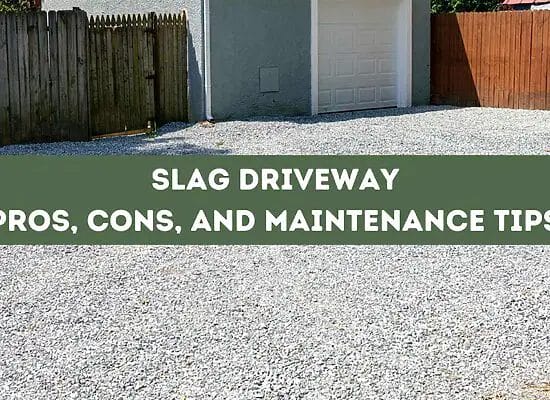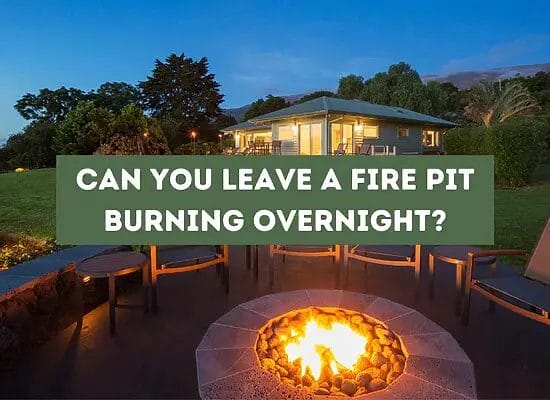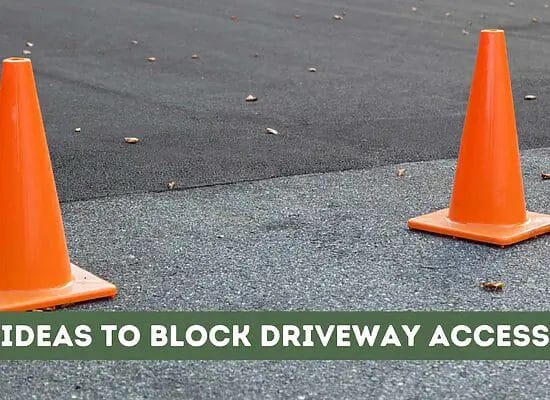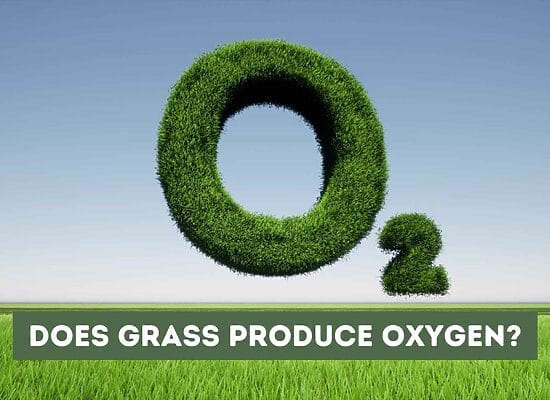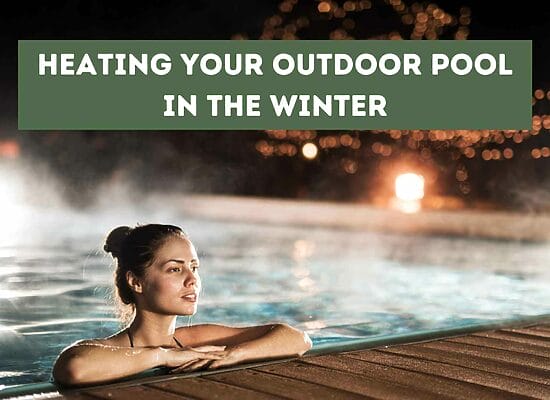
Are you tired of using polymeric sand for your paving projects? Are you looking for an alternative that is easier to apply or more cost-effective? Look no further! Below, we’ll explore some of the best polymeric sand alternatives that are available on the market.
One popular alternative to polymeric sand is cement. It is perfect for projects where vehicle traffic is present and can also repair cracks and fill joints. Another option is builder’s sand, which is easy to access and not expensive. However, it is very coarse and requires regular reapplication as it settles.
Other alternatives include EnviroSAND, white-washed sand, stone dust, and washed concrete sand. We will discuss the pros and cons of each option to help you make an informed decision for your next project.
Whether you are a professional contractor or a DIY enthusiast, finding the right material for your paving job can be a daunting task. But with the right information, you can choose an alternative that suits your needs and budget. So, let’s dive in and explore the world of polymeric sand alternatives!
Key takeaways:
- Polymeric sand is a popular choice for filling joints between pavers due to its hardening properties and ability to prevent weed growth and insect infestations.
- Alternatives to polymeric sand include cement, builder’s sand, stone dust, EnviroSAND, white-washed sand, and washed concrete sand.
- Factors to consider when choosing an alternative include ease of application, longevity, budget, foot traffic, appearance, and sustainability.
- Common issues with polymeric sand include weed growth, erosion, cracking, color fading, and cost concerns.
- Some alternatives, such as cement and mortar, may require professional installation.
- Steps to apply polymeric sand alternatives involve cleaning the surface, spreading the alternative sand, sweeping it into the joints, compacting it, and watering it to activate the adhesive properties.
- To prevent weed growth and insect infestation, use a high-quality polymeric sand alternative, remove existing weeds or grass, ensure tight fitting between pavers, and consider using a weed barrier fabric.
Understanding Polymeric Sand
If you’re planning on installing pavers, you may have heard of polymeric sand. Polymeric sand is a mixture of sand and polymer that is used to fill the joints between pavers. It is a popular choice for many homeowners and contractors because it offers several benefits.
One of the main advantages of polymeric sand is that it hardens when it comes into contact with water. This hardening process creates a strong bond between the pavers and helps prevent them from shifting or moving. In addition, polymeric sand helps to prevent weed growth and insect infestations in the joints between the pavers.
Polymeric sand is made up of fine sand particles that are coated with a special polymer that acts as a bonding agent. The polymer is activated when it comes into contact with water, causing it to harden and bond the sand particles together. This creates a strong, durable bond that can withstand heavy foot traffic and even vehicular traffic.
When using polymeric sand, it’s important to make sure that the joints between the pavers are completely filled. This will help to ensure that the sand hardens properly and creates a strong bond. It’s also important to follow the manufacturer’s instructions for application, as improper application can result in the sand not hardening properly.
Why Consider Alternatives to Polymeric Sand
When it comes to paving projects, polymeric sand has been a popular choice for filling the joints between pavers. However, there are some instances where using polymeric sand may not be the best option for you. In this section, we will explore why you should consider alternatives to polymeric sand.
Erosion and Stability
One of the main reasons why you may want to consider alternatives to polymeric sand is erosion. Polymeric sand can wash away over time due to heavy rain or water exposure, leaving gaps between pavers. This can compromise the stability of your paved surface, leading to unevenness and tripping hazards.
Durability and Maintenance
Polymeric sand is not the most durable material, and it can break down over time, especially in high-traffic areas. This can lead to the need for frequent maintenance and repairs, which can be time-consuming and costly.
Environmental Impact
Polymeric sand is not the most eco-friendly option out there. It contains synthetic polymers and chemicals that may not be biodegradable and can harm the environment. If you are looking for a more environmentally friendly option, you may want to consider alternatives to polymeric sand.
Polymeric Sand Alternatives
There are several alternatives to polymeric sand that you can consider for your paving project. Some of these alternatives include:
- Builder’s sand
- Concrete sand
- Stone dust
- Mortar
- EnviroSAND
- Cement
Each of these alternatives has its own benefits and drawbacks, so it is important to choose the one that is best suited for your specific project needs.
Common Issues with Polymeric Sand
When it comes to using polymeric sand for your paving projects, there are some common issues that you might encounter. Knowing what to expect can help you avoid potential problems and ensure that your project is a success.
Weeds
One of the most common issues with polymeric sand is weed growth. While polymeric sand is designed to prevent weed growth, it is not foolproof. Weeds can still grow through the sand if there is not enough sand or if the sand is not installed properly. To prevent weed growth, make sure to use enough sand and follow the manufacturer’s instructions carefully.
Rain
Rain can also be a problem with polymeric sand. If the sand is not fully cured before it rains, it can wash away and cause gaps in your paving. To avoid this issue, make sure to check the weather forecast and plan your installation accordingly.
Ants
Ants can also be a problem with polymeric sand. They are attracted to the sand because it provides a good environment for them to build their nests. To prevent ants from nesting in your polymeric sand, make sure to use an insecticide before you install the sand.
Cracks
Another issue with polymeric sand is cracking. If the sand is not installed properly or if there is not enough sand, it can crack over time. To prevent cracking, make sure to use enough sand and follow the manufacturer’s instructions carefully.
Color
Polymeric sand can also fade over time, which can be a problem if you want your paving to maintain its color. To prevent fading, make sure to choose a high-quality polymeric sand that is designed to resist fading.
Cost
Finally, the cost of polymeric sand can be a concern for some people. While it is more expensive than regular sand, it is also more durable and longer-lasting. To make sure that you get the best value for your money, make sure to choose a high-quality polymeric sand that is designed to last.
Types of Polymeric Sand Alternatives
When it comes to filling the gaps between your pavers, you may be wondering what alternatives are available to polymeric sand. Here are some of the most common types of polymeric sand alternatives that you can use for your next project.
Regular Sand
One of the easiest and most readily available options is regular sand. This type of sand is affordable and easy to find at your local hardware store. However, it is not as durable as polymeric sand and will need to be replaced more frequently.
Cement
Cement is another alternative to polymeric sand that can be used for paver joints. It is stronger and more durable than regular sand, making it a great choice for high-traffic areas. However, it can be more difficult to apply than polymeric sand and may require a professional to install.
Stone Dust
Stone dust is a byproduct of crushing stone for other purposes, such as construction. It is a fine, powdery substance that can be used to fill in the gaps between pavers. However, it can be more expensive than other alternatives and may not be as effective at preventing weed growth.
White-Washed Sand
White-washed sand is a type of sand that has been treated with a white pigment. It is a popular choice for beach-themed landscapes but can also be used as an alternative to polymeric sand. It is affordable and easy to find but may not be as durable as other options.
EnviroSand
EnviroSand is a newer alternative to polymeric sand that is made from recycled materials. It is designed to be more environmentally friendly and longer-lasting than regular sand. It is also easy to install and can be used in a variety of applications.
Other Alternatives
Other alternatives to polymeric sand include quarry dust, concrete sand, and silica sand. Each of these options has its own pros and cons and may be more suitable for certain projects than others.
Factors to Consider When Choosing an Alternative
When it comes to choosing an alternative to polymeric sand for your paving project, there are a number of factors to consider. Here are some key points to keep in mind:
1. Application
Consider the ease of application when selecting an alternative. Some alternatives, such as cement and mortar, can be more difficult to apply than polymeric sand. If you are working on a DIY project, you may want to choose an alternative that is more user-friendly.
2. Longevity
Think about how long you want your paving project to last. Some alternatives, such as EnviroSAND and white-washed sand, are known for their durability and long-lasting properties. Others, such as plain sand, may need to be replaced more frequently.
3. Budget
Consider your budget when selecting an alternative. Some alternatives, such as cement and mortar, can be more expensive than polymeric sand. Plain sand is often the most affordable option but may not offer the same level of weed prevention.
4. Foot Traffic
Think about the amount of foot traffic your paved area will receive. Some alternatives, such as cement and mortar, can be stronger and more durable than polymeric sand, making them a good choice for high-traffic areas.
5. Appearance
Consider the appearance of your paved area when selecting an alternative. Some alternatives, such as EnviroSAND and white-washed sand, come in a variety of colors and textures, allowing you to customize the look of your project.
6. Sustainability
Think about the environmental impact of your chosen alternative. Some alternatives, such as EnviroSAND, are designed to be eco-friendly and sustainable.
Pro Tip:
Before making a final decision, consult with a professional paving contractor to ensure that your chosen alternative is suitable for your specific project, especially if you are working on uneven ground or paving driveways.
How to Apply Polymeric Sand Alternatives
When it comes to applying polymeric sand alternatives, the process is quite similar to traditional sand installation. Here are some general steps to follow:
- First, ensure that the surface is clean and dry. Remove any debris, dirt, or old sand from the joints between the pavers.
- Next, evenly spread the polymeric sand alternative over the surface, filling the joints between the pavers. Be sure to apply enough sand to ensure complete coverage.
- Once the sand is in place, use a broom to sweep it into the joints. Make sure that the sand is evenly distributed and that all joints are filled to the same level.
- After sweeping, use a tamper or plate compactor to ensure that the sand is fully compacted and the pavers are level. This step is crucial to ensure that the pavers don’t shift or move over time.
- Finally, use a hose or watering can to lightly water the sand and pavers. This will activate the adhesive properties of the polymeric sand alternative and help it bond to the pavers.
It’s important to note that the specific application process may vary depending on the type of polymeric sand alternative you choose. Be sure to follow the manufacturer’s instructions carefully to ensure the best results.
If you’re a DIY enthusiast, applying polymeric sand alternatives can be a great way to improve the look and stability of your patio, driveway, or landscaping. However, if you’re not comfortable with the installation process, it’s always best to hire a professional.
One popular polymeric sand alternative is Joint Stabilizing Sealer, which combines a joint stabilizer and sealer in one product. This can make the application process easier and more efficient.
Another option is Midwest Products Premium Stepping Stone Cement Mix, which can be used as an adhesive for pavers and stepping stones. This product is especially useful for areas with heavy vehicle traffic, as it provides a strong and long-lasting bond.
Preventing Weed Growth and Insect Infestation
When it comes to outdoor paving projects, one of the biggest challenges is preventing weed growth and insect infestation. Luckily, there are several steps you can take to minimize these issues and keep your paved area looking great for years to come.
First and foremost, using a high-quality polymeric sand alternative is key. While traditional sand can provide a breeding ground for weeds and insects, polymeric sand alternatives are designed to resist both. Look for products that specifically mention weed prevention and insect resistance on the label.
In addition to using the right product, there are a few other steps you can take to prevent weed growth and insect infestation. Here are some tips:
- Before laying your pavers, make sure the area is clear of any existing weeds or grass. Use a weed killer if necessary.
- When laying your pavers, make sure they fit tightly together to minimize gaps where weeds can grow.
- After laying your pavers, sweep polymeric sand alternative into the joints. This will help lock the pavers in place and prevent weeds from taking root.
- If you notice any weeds or insects starting to take hold, act quickly. Pull weeds by hand or use a weed killer, and consider using an insecticide to keep pests at bay.
Pro Tip: To further minimize weed growth and insect infestation, consider using a weed barrier fabric underneath your pavers. This can help prevent weeds from growing up through the soil and reaching your paved area.
Long-Term Care and Maintenance
Taking care of your outdoor spaces is important to ensure that they remain beautiful and functional for years to come. When it comes to polymeric sand alternatives, you’ll want to make sure you’re aware of the maintenance requirements to keep them in top condition.
One of the main advantages of using polymeric sand alternatives is their durability. They are designed to withstand heavy foot traffic, extreme weather conditions and resist washout. However, like any other material, they require some maintenance to keep them looking their best.
As a homeowner, you can take certain steps to maintain your outdoor spaces. For example, you can regularly sweep away debris and leaves to prevent them from accumulating and staining the surface. You can also use a pressure washer to clean the surface periodically. Be sure to follow the manufacturer’s instructions for cleaning and maintenance.
If you’re working with a contractor, make sure you discuss the maintenance requirements with them. They can provide you with tips and recommendations to keep your outdoor spaces looking great.
It’s also important to choose the right materials for your project. Some polymeric sand alternatives may require more maintenance than others. For example, cement may require more frequent reapplication than other materials.
Pro Tip: To prevent weed growth and maintain the stability of your outdoor spaces, consider using a weed barrier fabric underneath the surface material. This will help prevent weeds from growing and reduce the need for maintenance.
FAQ: Polymeric Sand Alternative
What can I use instead of polymeric sand for pavers?
There are several alternatives to polymeric sand for filling the gaps between pavers. Some of the most popular options include builder’s sand, concrete sand, stone dust, and even regular sand. Mortar is another alternative to polymeric sand that can be used for filling gaps between pavers.
Can you make your own polymeric sand?
Yes, you can make your own polymeric sand by mixing sand and a binder such as Portland cement. However, it is important to note that the quality of the homemade polymeric sand may not be as good as the commercially available options, and it may not last as long.
What is best to fill the gaps between pavers?
The best material to fill the gaps between pavers depends on the specific project and the desired outcome. Some of the most popular options include polymeric sand, builder’s sand, concrete sand, and stone dust. EnviroSand and white-washed sand are also good alternatives to polymeric sand.
DIY polymeric sand
If you decide to make your own polymeric sand, it is important to follow the proper mixing instructions and use the correct ratio of sand to binder. Typically, a 3:1 ratio of sand to binder is recommended. It is also important to make sure the sand and binder are mixed thoroughly to ensure a consistent product.
EnviroSand
EnviroSand is a popular alternative to polymeric sand that is made from recycled materials. It is designed to be environmentally friendly and is a good option for those looking for a sustainable product. EnviroSand is also known for its durability and long-lasting properties.



